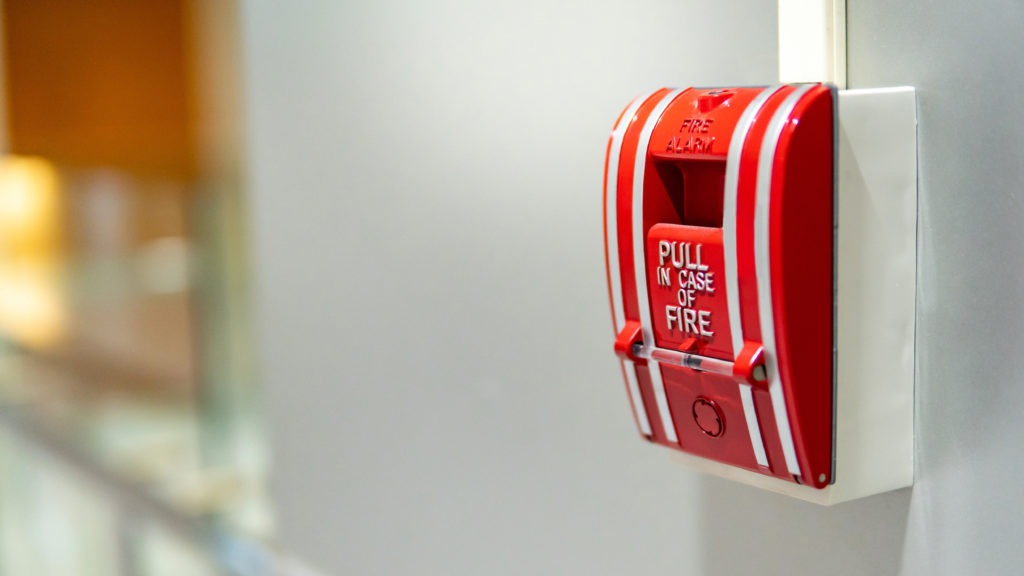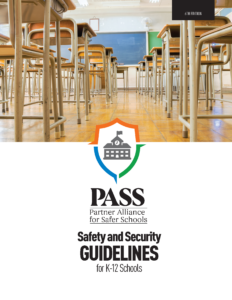What Fire Safety Reform Can Teach Us
December 1 marked the anniversary of the Our Lady of the Angels (OLA) school fire of 1958. The fire claimed the lives of 92 students and three nuns and forever shook its west Chicago residents. Just as the Triangle Shirtwaist Factory disaster of 1911 brought national attention to the sweatshop conditions of U.S. factories during the nation’s industrial revolution, the OLA fire became the launching point for a nationwide overhaul of fire safety in schools.
What might happen if school safety and security were just as highly regulated?
A Fateful Day
The nuns at OLA were unsure whether they should evacuate when students began to report a fire in the basement. As precious seconds went by, the nuns searched for the school principal for direction. But the principal was nowhere to be found. The nuns decided to evacuate their two classes without approval while their colleagues on the second floor, unaware of the crisis unfolding on the floor below, continued preparing their students for the usual 3 p.m. dismissal.
After evacuating her class, one nun ran back to pull the fire alarm. But by that time, heavy smoke had already engulfed the building and trapped hundreds of people on the second floor.
Firefighters didn’t arrive until 30 minutes after the fire had started. They began pulling children from second-floor windows as fast as they could, but the smoke, toxic gases, and intense heat had already led many students to begin jumping or even pushing each other out of the windows onto the concrete 25 feet below.
The OLA Fire: What Went Wrong
In the wake of any tragedy, it’s important to study what went wrong in order to prevent similar tragedies from occurring in the future. The lessons learned from the OLA fire can be divided into three main categories: structural, legal, and procedural.
Structural Problems: Only One Way Out
The OLA building itself was practically a tinderbox. The oldest part of the building was built in 1910 and, although the exterior was made of brick, the interior – stairs, walls, floors, doors, and roof – was made entirely of wood. The floors had been coated numerous times with petroleum-based waxes, which were extremely flammable. The stairwells were not fire-resistant, and there were no fire-safe doors from the stairwells to the second floor. Because ceilings were 12 feet high, the second-floor windows were 25 feet from the ground, making window escape deadly.

The school had no fire sprinklers, no automatic fire alarm, no smoke or heat detectors, and—most damning of all—no alarm connected to the fire department. There were only two fire alarm switches in the entire school and they were both located in the south wing. All four fire extinguishers were in the north wing, but they were mounted seven feet off the floor, too high for many of the adults and virtually all of the children to reach.
The entire building had only one fire escape, near one end of the north wing. Reaching it required passing through the main corridor, which—because of the tinderbox-like interior of the building—quickly became filled with suffocating smoke and superheated gases.
Legal Problems: Outdated Standards
The OLA disaster seems all but inevitable when we consider that the school building was legally in compliance with the fire safety laws of the time. Due to a legacy clause in the 1949 standards, the school was not required to comply with all existing fire safety guidelines, such as retrofitting the safety devices required for all newly-constructed schools. In fact, the school had passed a fire department safety inspection just two months before the fire. There were also no maximum occupancy regulations, and class sizes at OLA averaged 50 to 60 students.
Procedural Problems: No Fire Drills
Beyond structural shortcomings, the OLA fire also exposed a complete lack of fire evacuation procedures within the school. The fire was first discovered in the hallway by a teacher, who ran to Mother Superior’s office to alert her. But Mother Superior was down the hall, substitute teaching for another class. There was a rule in place at the time that the fire alarm could only be rung by Mother Superior. So the alarm wasn’t sounded. The teacher instead went back to her classroom, and she and a fellow teacher decided to evacuate their students without waiting for authorization. Only after evacuating their two classes did the teacher return to the school and pull the alarm.
The alarm, however, was not connected to the fire department. The fire began sometime between 2 p.m. and 2:20 p.m., but the fire department wasn’t called until 2:42 p.m. by a housekeeper from the rectory next door.
As smoke continued filling the second-floor hallway, the nuns inside the classrooms instructed their students to pray.
The National Response: Fire Safety Reform
The 95 deaths at OLA would not be in vain. The tragedy prompted swift action across the nation. There would be no more legacy clauses when it came to building standards. Thousands of historic school buildings were brought up to the latest fire code. New regulations were enforced regarding the use of fire-resistant materials, proper waste disposal, fire-resistant doors, and overcrowding in schools. Regulations were also added regarding fire alarms, including adding multiple alarm switches throughout school buildings and routing fire alarms directly to fire stations. Fire drills were mandated nationwide and became part of every child’s grade school experience.
Altogether, an estimated 16,500 schools underwent major fire safety reforms in 1959. Perhaps most importantly, because of these strict reforms, no school fire has killed more than ten people since the OLA disaster.
The drastic decrease in mortality rate and injuries from school fires is a clear indication of the efficacy of fire safety regulations, which not only reduce the likelihood of a fire spreading through a school building, but also ensure that building occupants are evacuated to safety no matter what.
What Other Reforms Are Needed to Enhance School Safety and Security?
While fire safety regulations have proven effective in protecting both students and faculty, other crises lack official guidelines. Over the last two decades, schools have seen an increase in human threats to their campuses. In the absence of national standards regarding these threats, states, municipalities, and local school districts, some of which have no full-time security personnel, are having to piece together their own regulations and, to make matters worse, school safety and security reforms are often made reactively instead of proactively.
The Partner Alliance for Safer Schools (PASS) was founded in 2014 to fill the gaps left by the lack of national standards in school safety and security. Through industry research and collaboration with education, public safety, and industry experts, PASS produces a regularly-updated set of guidelines and checklist tools that are provided to schools and communities at no cost.
Where Do We Start?
School safety and security don’t have to be costly. The PASS Guidelines demystify how schools can get started improving their safety and security at little to no extra cost. It starts with the basics: policies; procedures; and people, roles, and training.
Policy Example: Anonymous Reporting Systems
The PASS Guidelines provide a number of different vetted best practices schools can adopt to enhance their safety and security. One example of an effective policy best practice is the implementation of an anonymous reporting system. Whether it’s bullying, substance abuse, or even suicide, students often have a better pulse on what’s going on at their schools than adults do. Implementing a system allowing students and other community members to anonymously report potential threats has shown to be effective in deterring school disasters. Since 2000, 22 states have adopted laws addressing anonymous reporting.
Tip reporting processes should be simple; they should provide students, parents, and community members with a safe way to report information about any issues that concern their safety or the safety of others, and they should meet the following criteria:
- The anonymity of every report should be guaranteed—no caller ID or data tracking.
- The program should be available to all members of the community.
- Calls should be answered immediately, and service should be available 24 hours a day, every day of the week.
- Every tip should be investigated.
Procedure Example: Lockdown Drills
As we learned from the OLA disaster, drills are paramount to ensuring safety standards. There are only two times you’ll know if your emergency procedures work, and one of those times is during the actual emergency. The only other time has to be intentionally created.
The need for “lockdown” drills has grown due to the unique circumstances of an active shooter event. Whether in a school, business, or other public space, best practices now dictate having a lockdown protocol as the major component of an effective safety plan when escape is not possible. The PASS Guidelines include recommendations for how to conduct lockdown drills, as well as tips on how to design a drill that works best for your school.
People, Roles & Training
The actions of teachers and supervising staff are integral to successful response in an emergency and can delay harm coming to their students. As of 2019, 32 states require districts to train staff in emergency preparedness and school safety. While teachers must of course follow the directives of the principal or site administrator, they should also be able to act on their own in an emergency when direction is not available.
At a minimum, staff should be trained on:
- What to do in the emergency;
- How to make independent decisions and act on them immediately;
- What strategies and options they can use under various circumstances;
- Who is responsible for what, and their individual roles; and
- How to communicate with police, first responders, and others responding to the emergency.
For more information on these and other protocols, your school can adopt to enhance safety and security, the full set of PASS Guidelines can be found here.
Check Out the PASS Safety and Security Checklist
The PASS Safety and Security Checklist allows you to assess your school or district’s safety and security efforts compared to national best practices. Use the Checklist to assess what may need to be implemented by your school or district. You can determine whether you have the recommended school safety and security best practice in place, in progress, needed for the future, or whether it’s not necessary for your facility.
The PASS Guidelines provide the narrative describing each of the best practices found in the Checklist tool.
No school fire has killed more than 10 people since the OLA disaster because of sweeping regulations that were strictly enforced in the wake of the OLA tragedy. What other disasters could be prevented if schools adopted robust regulations across all areas of safety and security?
Categories
- Access Control
- Artificial Intelligence
- Classroom Door Locks
- Crime Prevention Through Environmental Design
- Cybersecurity
- Duress Alarm
- In the News
- Legislation
- Lockdown Drills
- New Technologies
- PASS Advisory Council
- PASS Board of Directors
- PASS Partners
- PASS Recommendations
- Preparedness
- Safe School Week
- Safety & Security Guidelines
- School Safety & Security
- Security Best Practices
- Video Surveillance

Ready to get the Guidelines?
The most comprehensive information available on best practices specifically for securing school facilities, vetted extensively by experts across the education, public safety and industry sectors.
